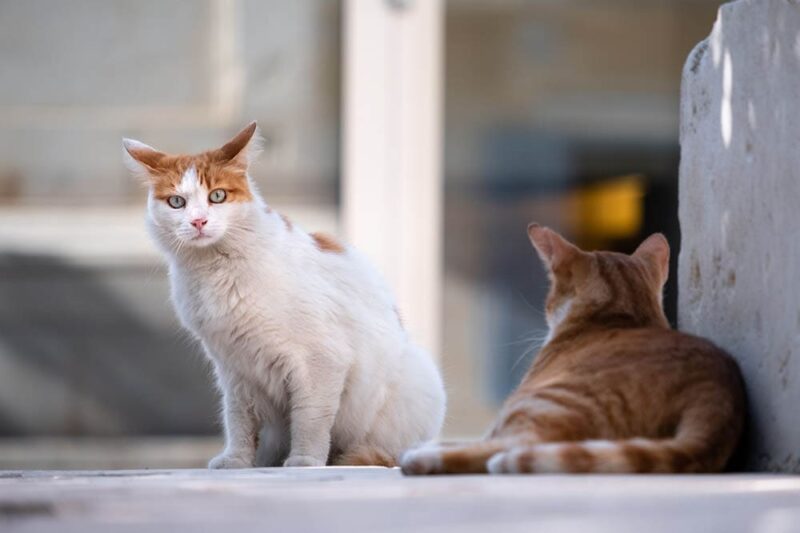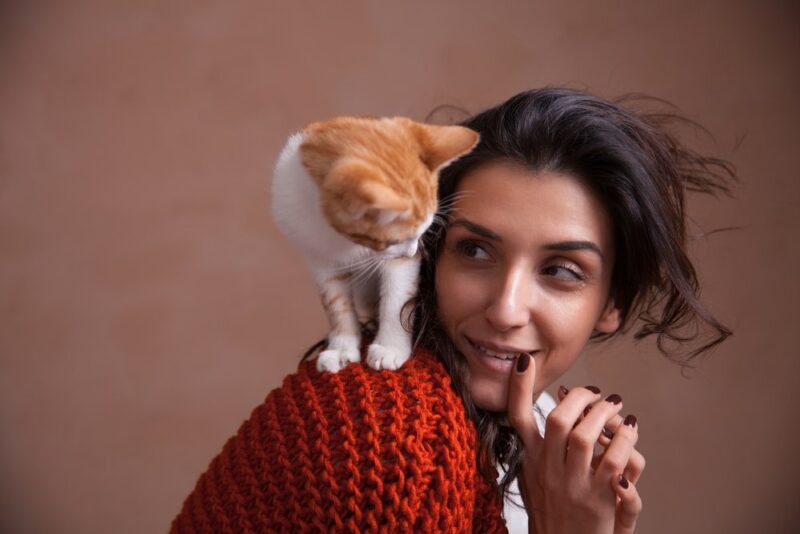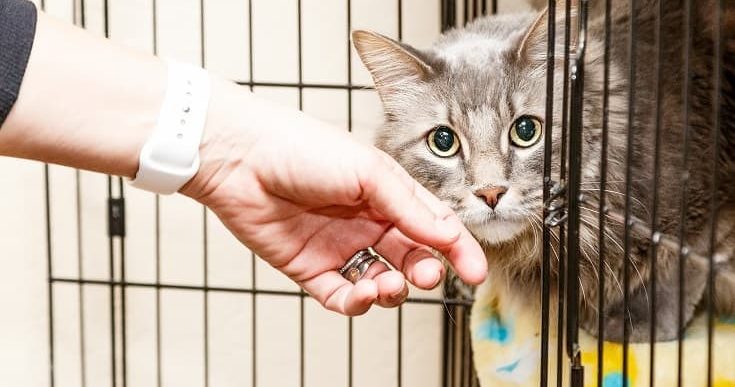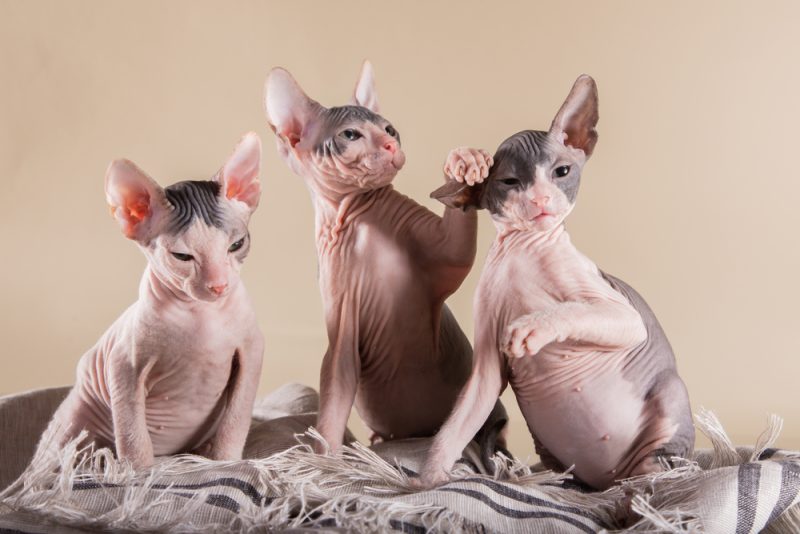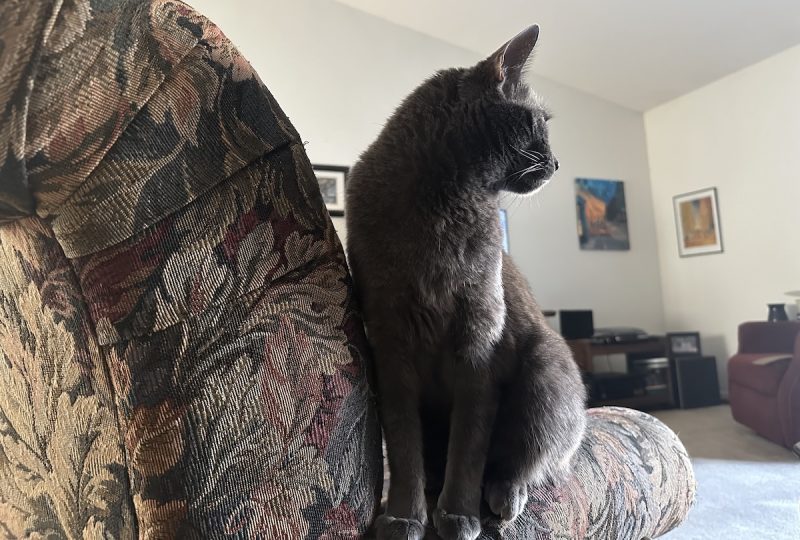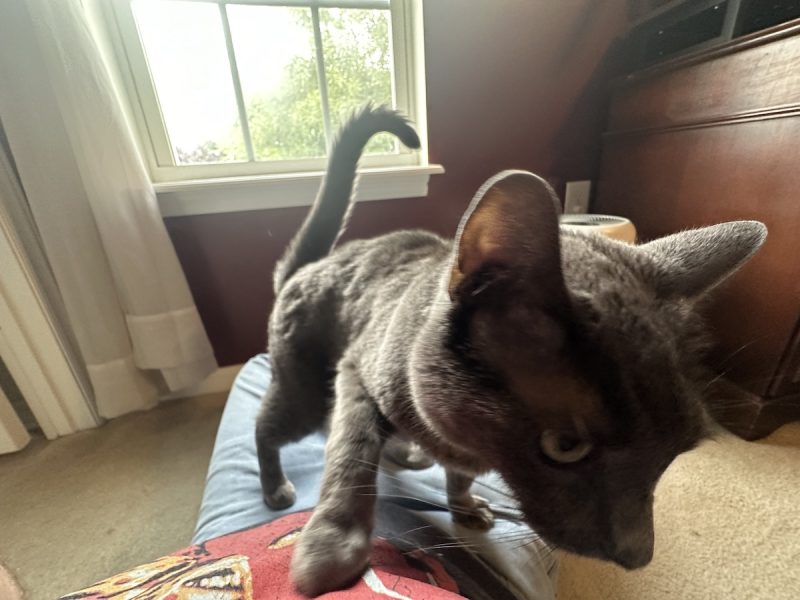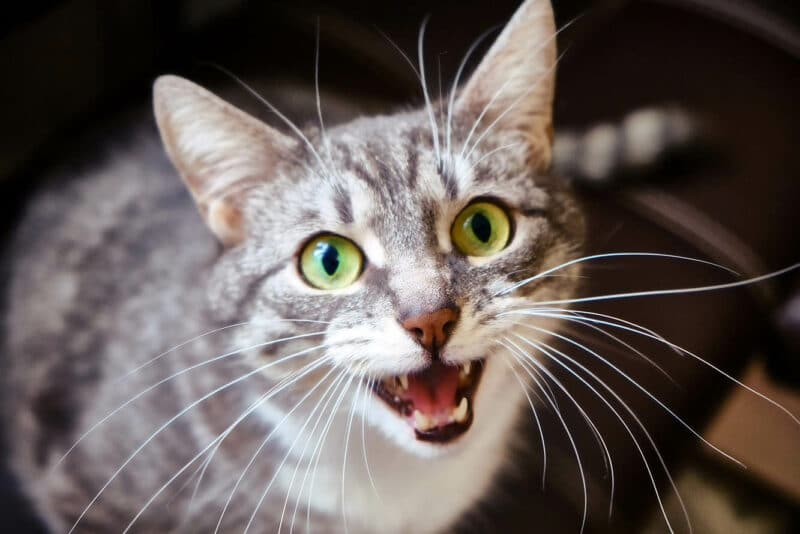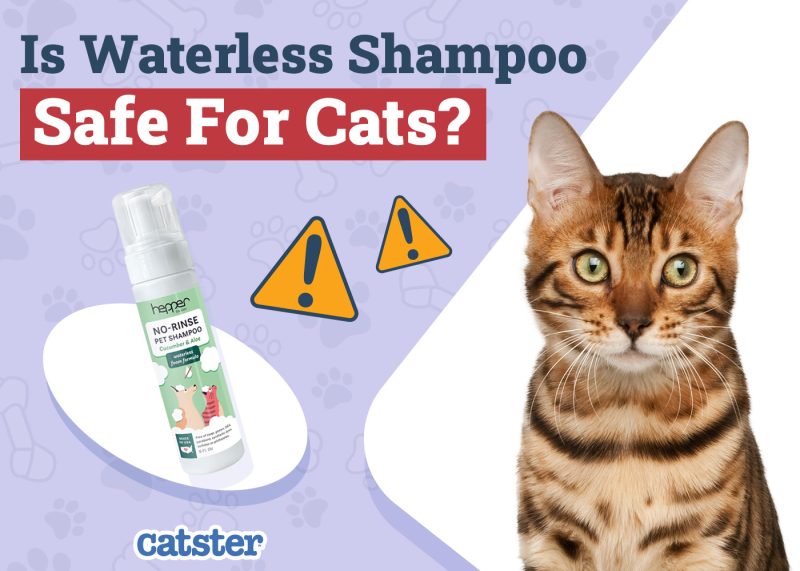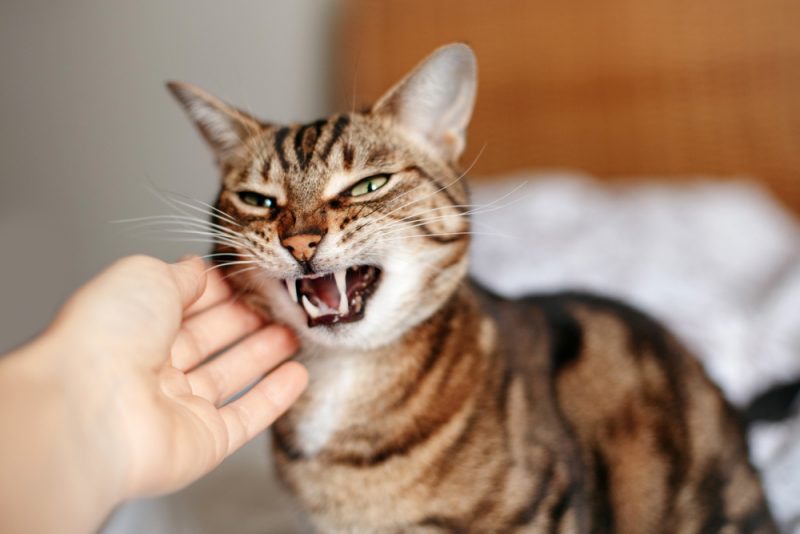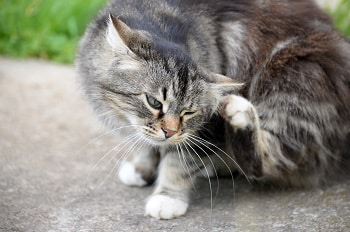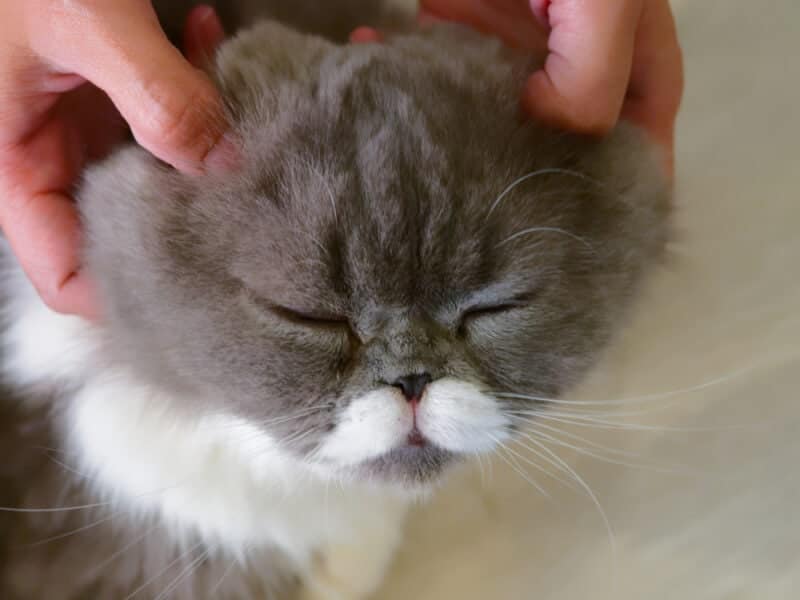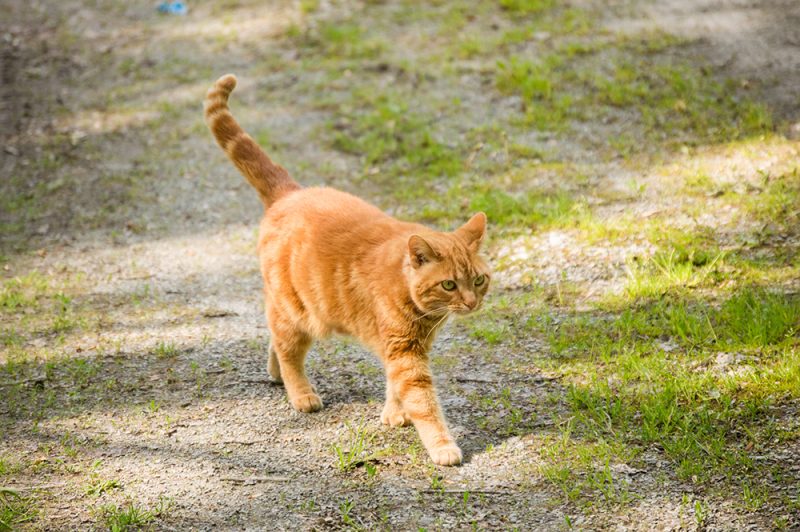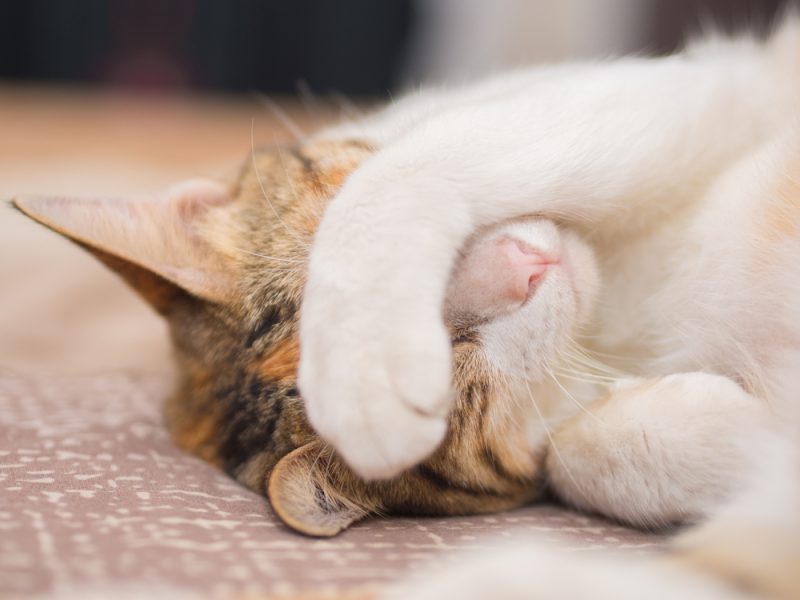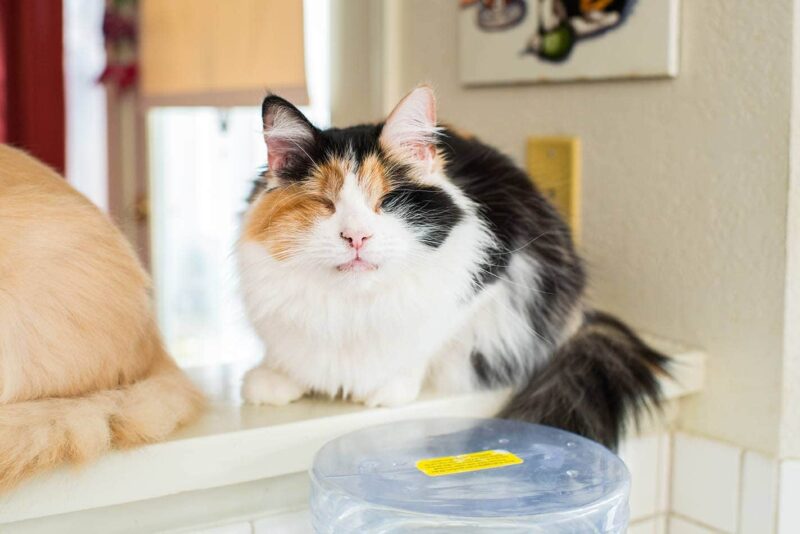In this article
An ovariohysterectomy, or spay, is the surgical removal of a female cat’s ovaries and uterus. It is a procedure that requires general anesthesia. This means your cat isn’t just sedated but completely asleep. It is recommended for owners to spay their own cats, and there are numerous organizations that are helping to spay feral cats too.
Continue reading to learn about the procedure itself, the pros of spaying, and what to expect afterward.

Pros of Spaying Your Cat
Millions of animals are euthanized through the American shelter system every year. In addition, many cities across the country have an outdoor or feral cat overpopulation issue. Part of this is because cats go through multiple heat cycles a year. Therefore, they can get pregnant and have many babies over the course of 12 months, worsening the overpopulation problem.
It goes without saying that spaying as many cats as possible greatly reduces this issue. If your cat is indoor only but intact (not spayed), she may try to escape or howl to attract a mate during her heat cycles. This behavior may lead to an unwanted and unplanned litter of kittens.
Also, if your cat is spayed, she cannot suffer a pyometra as she gets older. Pyometra is a condition where the uterus becomes infected and filled with purulent discharge (pus). It occurs most frequently within a few weeks of a heat cycle ending and is more common in older cats. When this condition occurs, it is a surgical emergency to have your cat spayed. If you compare a healthy, happy cat spay costing a few hundred dollars to an emergency pyometra spay costing upward of $5,000 (depending on the city and exact situation), it makes more sense to spay your cat early and when they’re healthy.
Spaying your cat will additionally reduce their risk of developing mammary cancers later in life. Studies report an 86% to 91% reduction in mammary cancers when a cat is spayed prior to 6 months of age and 12 months of age, respectively. Since mammary cancer is the third most common type of cancer in cats, why not drastically reduce their risk by spaying your pet? If your cat develops a mammary tumor, surgery is invasive and radical (all mammary tissue must be surgically removed). This is yet another reason that prevention makes more sense than treatment.
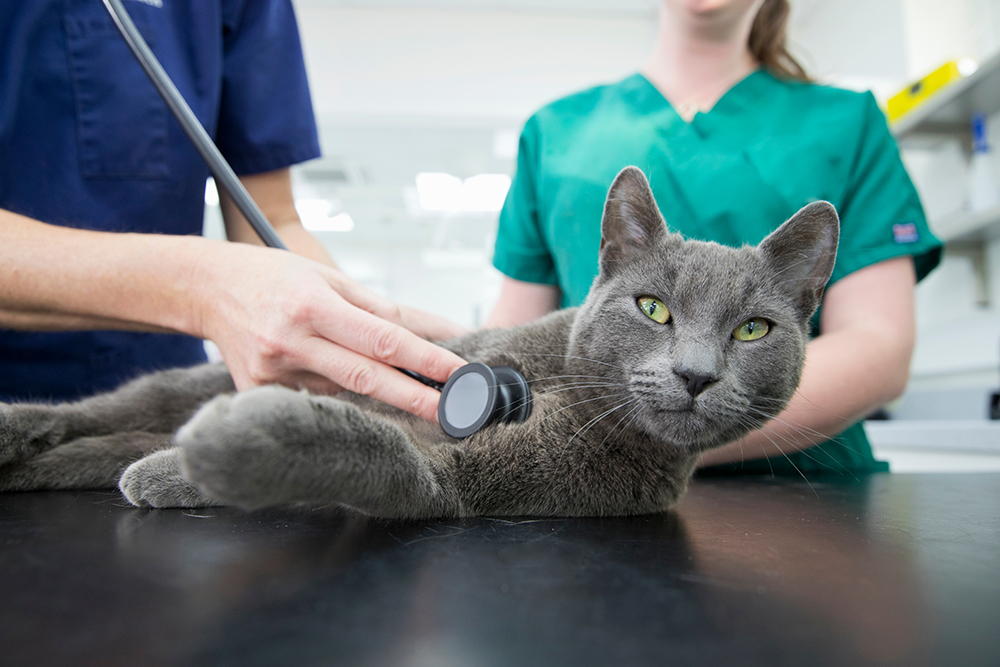
Should My Cat Have a Litter or a Heat Cycle First?
No. Cats can go through their first heat cycle around 6 to 9 months of age. Even if your cat is less than 1 year old, they can still get pregnant! There are no scientific benefits to allowing your cat to have one or multiple heat cycles or a litter of kittens prior to spaying her.
There’s also the problem of the overpopulation of cats in this country. There are millions of kittens and juvenile and adult cats that need homes. Allowing your cat to contribute to this problem should be avoided.
Spaying Step-by-Step
- Step One: Your cat will most likely be given an injection of medications to help sedate her. Depending on the anesthetic protocol your veterinarian uses, there may be two or three different medications mixed in one syringe. This mixture is most commonly given into the muscle.
- Step Two: Once sedated, your cat will be intubated. This is when a tube is placed into her trachea and attached to an anesthetic machine. The machine will keep your cat under anesthesia using a mixture of anesthetic gases and oxygen while a technician monitors her breathing. Some animal shelters will only use injectable anesthesia in cats. This is to save both time and money for the veterinarian and the shelter. Some shelter veterinarians are able to spay and neuter dozens of animals in a day. The veterinarians are typically so fast that heavy injectable anesthesia is often adequate.
- Step Three: The fur over your cat’s belly is clipped and the area is scrubbed to create a sterile field. This area is then draped off to isolate the clean area from the rest of the fur.
- Step Four: An incision is made into the abdominal cavity, near the level of the belly button (referred to as the umbilicus in a cat).
- Step Five: Both ovaries and uterus are gently manipulated to be exposed and exteriorized from the abdominal cavity. A suture is then used to tie off vessels and connective tissue between the organs and the rest of the body. Once these sutures are securely in place and no hemorrhage will occur, the organs are then gently cut out and removed. Care is taken to make sure the sutures stay in place within the tissue left inside the body so there is no bleeding.
- Step Six: The incision into the abdomen is sutured close. Depending on the age and size of the cat, there are at least two different layers of sutures. One is what is referred to as the body wall. This is the holding layer of the surgical site. Following that layer, there is sometimes a layer of subcutaneous tissue that is sutured close. The final layer is the skin. You may or may not see the sutures within the skin. Your veterinarian may do what is called a buried suture line so you do not see the sutures and they won’t need to be removed.
- Step Seven: Your cat is taken off the anesthetic machine and allowed to slowly wake up following her surgery. She will likely be given an injection of a long-acting pain medication and antibiotic prior to waking up.
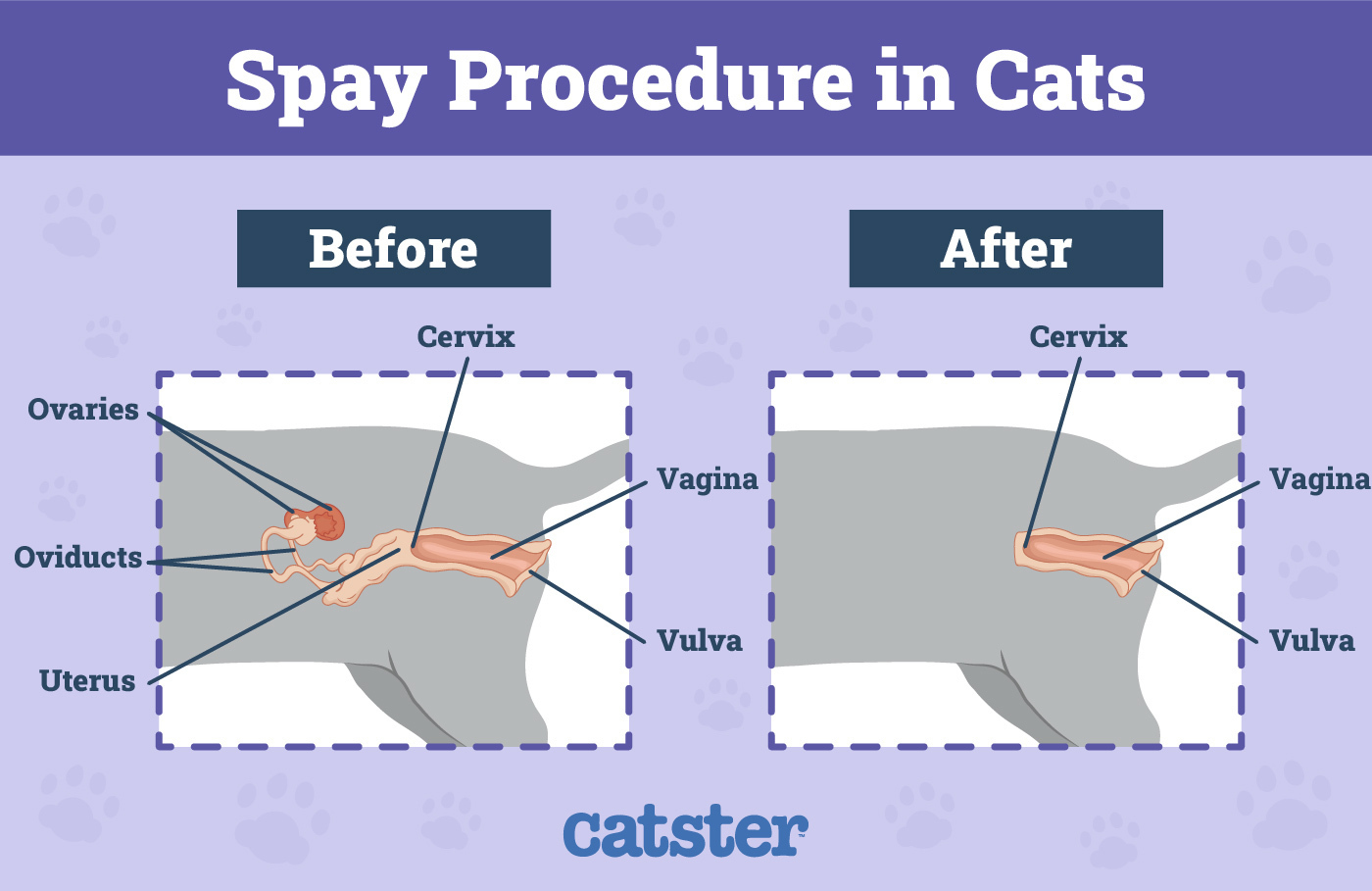
Healing & Aftercare
Your cat will need to stay quiet for at least 10 to 14 days. This means she cannot run, jump, or play with her housemates. You can leave her in a bathroom, a small laundry room, or a large dog crate. Any excessive movement can cause inflammation of the surgical site, pain, and swelling or in the worst-case scenario, the entire suture line breaks down. This would mean your cat has to undergo a second surgery to fix everything.
Your cat will not be allowed to lick at her incision. Your veterinarian will likely send home an Elizabethan collar (e-collar) to put on your cat. If your cat gets this cone off or you remove it, your cat licking the incision will cause irritation, inflammation, pain, and infection. They may also chew out the sutures, causing the incision to open up. Save yourself the headache and leave the cone on.
Your cat will likely go home with some type of pain medication. Depending on the age of your cat, this may be in the form of a liquid given a few times a day, a pill given once a day, or a capsule you can open and mix in their food.
Your cat will have to have any visible sutures removed between 10 and 14 days.
Will My Cat’s Personality or Body Change?
Potentially. If your cat was very hyper prior to the surgery, would howl during her heat cycle, would try to escape during her heat cycle, or had issues with spraying, these behaviors may no longer occur after surgery. However, there is no guarantee that spaying your cat will eliminate unwanted behaviors.
Your cat will gain weight more easily once she is spayed. It’s important to speak to a veterinarian about what types of food she should be eating and in what amounts.
Need veterinary advice but can't get to the clinic? Catster recommends PangoVet, our online veterinary service. Talk to a vet online and get the answers and advice you need for your cat without having to leave your living room — all at an affordable price!

 Conclusion
Conclusion
Spaying your cat prior to their first heat cycle is strongly recommended. Your cat is completely anesthetized during this procedure and will recover on pain medications. She will be up and about after surgery and within 10 to 14 days, back to living her best life.
Featured Image Credit: Bogdan Sonjachnyj, Shutterstock
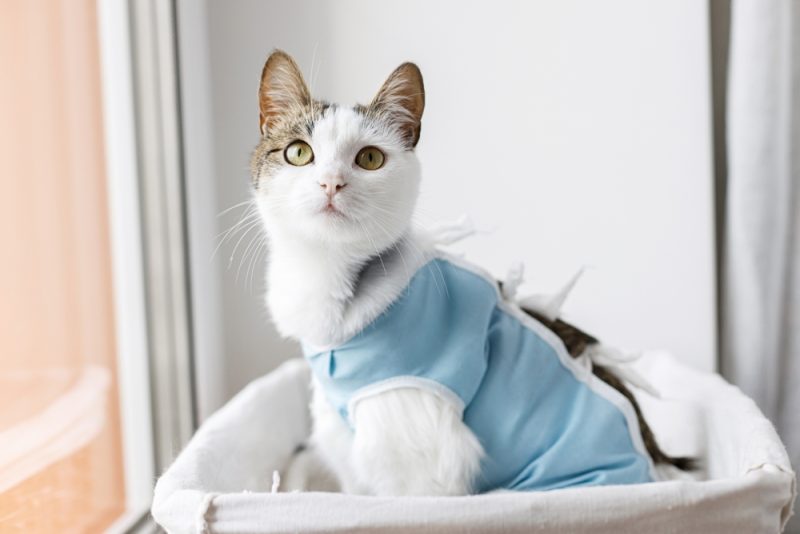
 Conclusion
Conclusion
